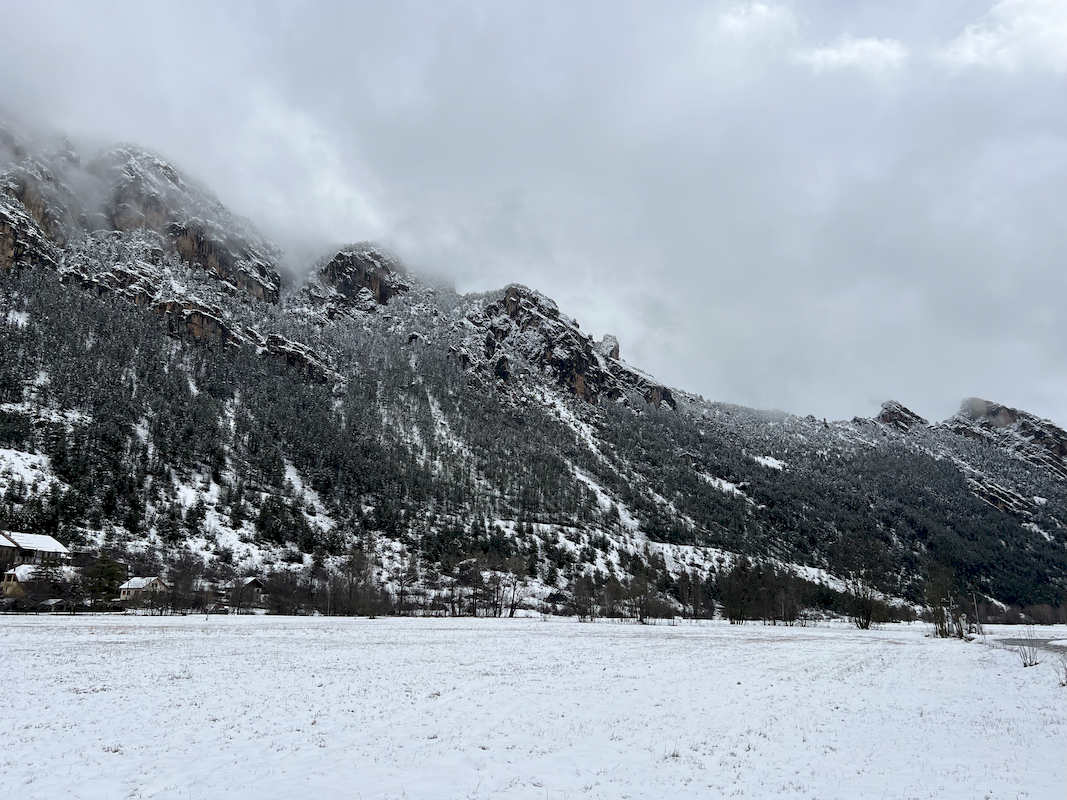
Route no. 2: La Plaine
Easy
Correspondence with snowshoe rating :
R1
Recommended for :
- Less active families with less athletic children (from 8 years old)
- Less active parents with a baby in the wagon
Description
A 5 km loop from the Maison de la Vallée.
A very pleasant and sunny stroll at the heart of the Freissinières valley, ideal for family outings.
Signs : white "snowshoe" sign on purple background.
Description :
Start and finish : Maison de la Vallée
- From the Maison de la Vallée, go down the left bank of the Biaysse river.
- Cross the bridge and continue to walk alongside the river on its right bank.
- At the second bridge there is the possibility to shorten the hike by crossing the river to come back by the chemin. Otherwise, keep going down the river on its right bank.
- At the third bridge, cross the river and the plain and a small stream until reaching a track.
- Take left on the trail in the continuity of the piste, going up the little stream for about 1 km.
- Passing the hamlet of le Plan, continue straight on the chemin de la Plaine.
- At the crossroads, take a left back to the Biaysse river, then take left again to go back to the start of the itinerary.
- Towns crossed : Freissinières
Gear
Water and snacks
Warm clothing (avoid jeans)
High boots (hiking, rigid snow boots)
Walking poles
Sun screen
Sunglasses
Hat/cap
Small first-aid kit
Recommandations
https://www.nordicalpesdusud.com/domaines/freissinieres
A few rules:
→ You use these itineraries at your own risk. Find out about the weather conditions and avalanche risks published by Météo France. Also, don't hesitate to ask at tourist information offices or the Nordic chalet before you set off.
→ For avalanche-prone itineraries, we strongly advise you to take your avalanche transceiver, shovel and probe with you.
→ Night-time activities on Nordic areas are prohibited. It must be supervised by a professional and must be authorized by the piste service.
→ Some routes are shared with cross-country skiers: give them priority, always walk along the edge of the piste and be vigilant when crossing these shared routes.
→ Don't walk in cross-country ski tracks, straddle them.
→ Respect signage: dangers, prohibitions, trail directions, among other things.
→ Don't overestimate your possibilities!
→ Take your garbage with you!
Please note : This information is given for guidance only. It is your responsibility to check the weather forecast before you leave and not to overestimate your possibilities. The Tourist Office and the PNE cannot be held responsible in the event of an accident. In case of doubt, contact professionals: instructors or equipment hire companies.
Mountain Rescue : 112
17 points of interest
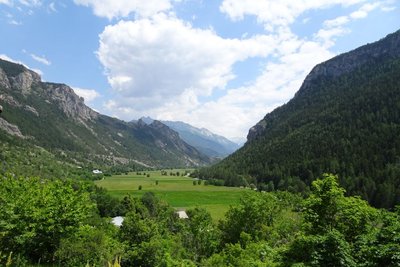
La vallée de Freissinières - Office de tourisme Pays des Écrins  History
HistoryThe Freissinières valley
The valley was created as the result of glacial overdeepening, that is to say, when the glacier came to a halt against the Pallon hard rock bar, it created a depression. When the glaciers retreated, a lake was left behind this rock bar and was gradually filled up by alluvial deposits. From a historical point of view, the Protestant pastor Félix Neff fundamentally altered life in the valley in 1826 by founding a training college for primary school teachers, developing irrigation processes and teaching new crop growing methods, among other things…
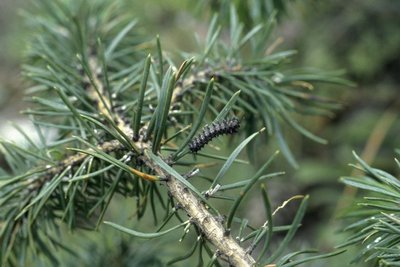
Aiguilles de pin sylvestre - Christian Baïsset - Parc national des Écrins  Fauna
FaunaThe black pine
The black pine did not arrive here of its own accord. It was introduced by the National Forestry Agency and was planted to stabilise eroded mountain areas. It can be identified by its long needles which are grouped in pairs and by its large cones.
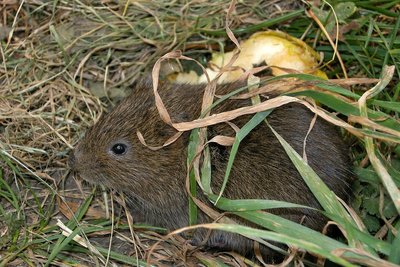
Un campagnol amphibie - Damien Combrisson - Parc national des Écrins  Fauna
FaunaThe southern water vole
Flattened paths through the reeds, and holes 6 to 7 cm in diameter... the southern water vole has been here! This large rodent with dark brown fur on its back digs its burrow in the banks of the stream. This species, which lives close to water, causes no damage to crops. Not a prolific breeder, its numbers are low and it is threatened with extinction.

Goodyère rampante - Marie-Geneviève Nicolas - Parc national des Écrins  Flora
FloraThe creeping lady’s-tress
This inconspicuous little orchid grows on moss, in the undergrowth of the pine forest. Growing at the base of the stem, its leaves are oval and pointed, with a network of veins. The upright stem only bears a few scales. Covered in a fine down, the white flowers are arranged in the form of a spiral spike, facing the same way. A little gem that is worth keeping an eye out for!

Ecureuil roux - Marc Corail - Parc national des Écrins  Fauna
FaunaThe red squirrel
Elegant and alert, a squirrel crosses the track, followed by its long feathery tail. Red? This one is dark brown. In the mountains this rodent has adopted a “solar panel” strategy, on the principle that dark colours absorb the heat more efficiently. It is active during the day and does not hibernate, although it does minimise its activity on days when the weather is bad. It is a protected species.
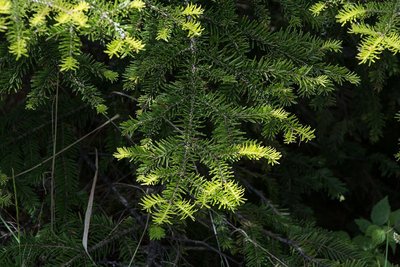
Un sapin pectiné - Mireille Coulon - Parc national des Écrins  Flora
FloraThe European silver fir
The fir thrives on this north-exposed slope, called the ubac. Its needles have two white stripes on their undersides. They are arranged on either side of the boughs, and not all the way around them, which distinguishes it from the spruce. The elongated cones stand upright, rather than hanging downwards. They grow in large number, often mingling with larch trees under whose shade they can grow. By contrast, the larch - the "tree of light" - cannot grow under the cover of fir trees.
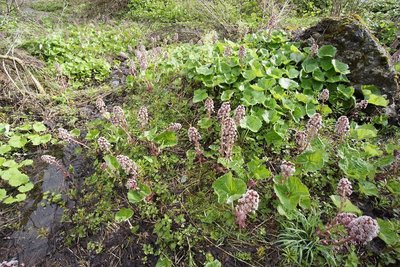
Pétasite hybride - Ludovic Imberdis - Parc national des Écrins  Flora
FloraThe petasites hybridus or butterbur
The ditches on the Freissinières plain are edged by a plant with very broad leaves: the petasites hybridus or butterbur, also called the devil's hat in French. In Ancient Greek, the petasos was a round felt hat. Nobody knows whether the devil wears this hat, but the plant is certainly used as a herbal remedy. Very common in the lowlands, it is quite rare in the Pays des Écrins although other species of petasites do grow at higher altitude.
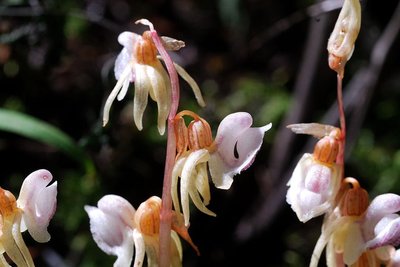
L'épipogon sans feuilles - Mireille Coulon - Parc national des Écrins  Flora
FloraCool forest
Here, the drought-sensitive fir has established itself among the larches. This forest harbours treasures such as the very rare ghost orchid and the shield-moss, a unique little moss - also rare - which grows on wood in an advanced state of decomposition and thus signals that the natural cycle of the forest is unimpaired.
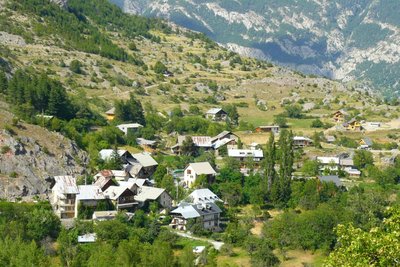
Freissinières - Office de tourisme Pays des Écrins  History
HistoryFreissinières
The name Freissinières comes from the old word freissinière meaning "black ash". This municipality, which extends as far as the Col des Terres Blanches and the Col de Freissinières, both of which overlook the Champsaur valley, is made up of thirteen hamlets, although none of them are called Freissinières! Archaeological excavations carried out twenty years ago show that sites at high altitude (such as Faravel) were occupied on a seasonal basis from the retreat of the glaciers 12,000 years ago (Upper Palaeolithic period) and that this occupation continued after that.
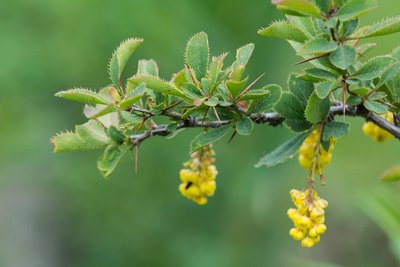
Épine-vinette en fleurs - Mireille Coulon - Parc national des Écrins  Flora
FloraThe common barberry
The common barberry is a bush with long thorns arranged in threes, and with oval serrated leaves. In spring, it produces clusters of yellow flowers, which later develop into red, oval and elongated berries. These tart fruits are edible and can be made into jellies... if you have the patience to gather them! This shrub grows almost everywhere.
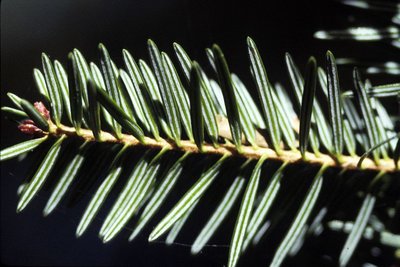
Aiguiles de sapin - Parc national des Écrins  Flora
FloraThe fir
The fir thrives on this north-exposed slope, called the ubac. Its needles have two white stripes on their undersides. They are arranged on either side of the boughs, and not all the way around them, which distinguishes it from the spruce. The elongated cones stand upright, rather than hanging downwards. They grow in large number, often mingling with larch trees under whose shade they can grow. By contrast, the larch - the "tree of light" - cannot grow under the cover of fir trees.
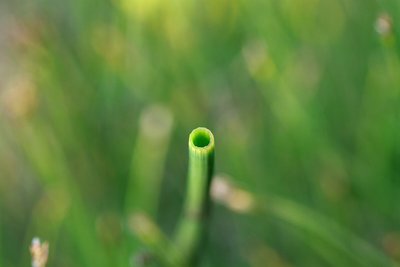
Section de feuille de prêle des rivières - Cédric Dentan - Parc national des Écrins  Flora
FloraThe horsetail
On the banks of a stream, on the edge of a ditch a plant grows which resembles a large bottle brush... or a horse's tail, depending on your imagination. It's the field horsetail, a plant related to ferns. It is known for its medicinal properties because it is rich in silica, a powerful remineraliser for the bones, cartilage and skin. There are several species of horsetail.
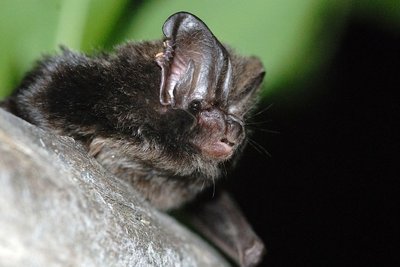
La barbastelle - Mireille Coulon - Parc national des Écrins  Fauna
FaunaThe barbastelle
In the village, birds build their nests in the old walls and bats live in the attics. Some hide behind shutters that are secured open against the walls. The barbastelle is a rare species of bat. Like all other bat species, it is protected. The hamlet of Le Ribes is privileged to be its home in the summer. This small mammal feeds on a large number of insects every night. It «moves house» frequently if it is disturbed or simply as a precaution.
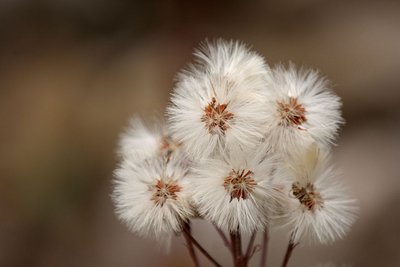
Pétasite hybride en fruit - Mireille Coulon - Parc national des Écrins  Flora
FloraThe petasites hybridus or butterbur
On the banks of the stream there is a plant with very broad leaves: the petasites hybridus or butterbur. In Ancient Greek, the petasos was a round felt hat. Nobody knows whether the devil wears this hat, but the plant is certainly used as a herbal remedy. Common in the lowlands, it is generally quite scarce in the mountains, although other species of petasites do grow at higher altitude. In any event, it makes a great hat!
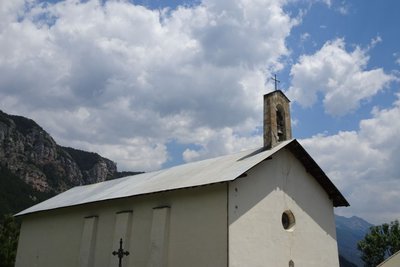
L'église Sainte Marie-Madeleine - Office de tourisme Pays des Écrins  Vernacular heritage
Vernacular heritageThe church of Sainte Marie-Madeleine
The church of Sainte Marie-Madeleine was built in the seventeenth century. It is thought to be a former Protestant church which escaped destruction in 1684 when Louis XIV was leading an anti-Protestant drive. The Protestant church is then thought to have undergone works to convert it into a Catholic church.
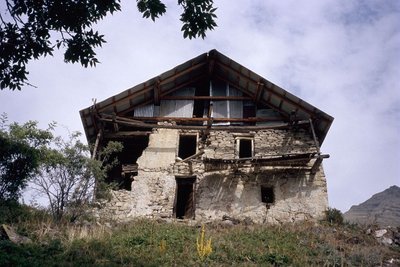
La maison de Felix Neff - Manuel Meester - Parc national des Écrins  History
HistoryFélix Neff
Félix Neff was a Swiss Protestant pastor. He was responsible for the Protestant Revival in the Freissinières valley in the seventeenth century. He also set up the first education college for primary school teachers in France, in Dormillouse in 1826. He was also behind new irrigation and house-building techniques, developments which improved the everyday lives of the local people.
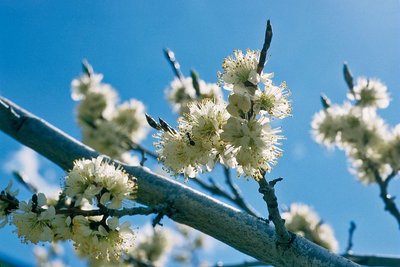
Prunier de Briançon - Bernard Nicollet - Parc national des Écrins  Flora
FloraHuile de marmotte - marmot oil
In times past, the inhabitants of Freissinières used oil for cooking and lighting. Walnut or almond oil was difficult to produce at this high altitude. The Briançon plum tree or marmottier, however, can withstand the mountain conditions, and the yellow fruits of this tree contain kernels. These kernels were pressed in mills to produce an oil with medicinal virtues: marmot oil. .
